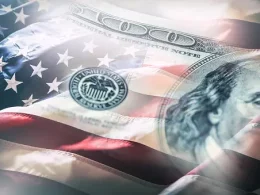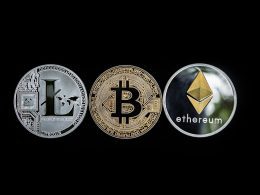In the dynamic landscape of global finance, Bitcoin and the U.S. Dollar stand out as two pivotal currencies that often represent contrasting paradigms. Bitcoin, a decentralized digital currency, has gained significant attention and adoption since its inception in 2009. On the other hand, the U.S. Dollar remains the world’s primary reserve currency, influencing international trade, finance, and geopolitics. This article delves into the latest trends surrounding Bitcoin and the U.S. Dollar, exploring their current trajectories, market dynamics, and broader implications.
Overview of Bitcoin

Bitcoin, created by an anonymous entity known as Satoshi Nakamoto, introduced the concept of a peer-to-peer electronic cash system based on blockchain technology. Unlike traditional fiat currencies, Bitcoin operates independently of central banks or governments, relying on a decentralized network of nodes for validation and transactions. Its scarcity, capped at 21 million coins, contributes to its perceived store of value akin to digital gold.
Recent Trends in Bitcoin
Bitcoin’s journey has been marked by extreme volatility, characterized by rapid price fluctuations influenced by factors such as regulatory developments, institutional adoption, macroeconomic conditions, and investor sentiment. Recent trends indicate growing institutional interest, with corporations and financial institutions increasingly viewing Bitcoin as a hedge against inflation and currency devaluation.
The U.S. Dollar: Foundation of Global Finance
As the world’s predominant reserve currency, the U.S. Dollar plays a pivotal role in global trade and finance. Issued and regulated by the Federal Reserve, the Dollar’s stability and liquidity make it a preferred medium for international transactions, central bank reserves, and commodity pricing.
Recent Trends in the U.S. Dollar
The Dollar’s value is influenced by various factors including U.S. monetary policy, economic indicators, geopolitical events, and global demand. Recent trends reflect shifts in Federal Reserve policy, inflation concerns, and impacts of fiscal stimulus measures on the Dollar’s strength relative to other currencies.
Comparative Analysis: Bitcoin vs. U.S. Dollar
| Aspect | Bitcoin | U.S. Dollar |
|---|---|---|
| Nature | Decentralized, digital currency | Centralized, fiat currency |
| Supply Mechanism | Fixed supply (21 million coins) | Controlled by Federal Reserve |
| Volatility | High volatility, speculative asset | Relatively stable, influenced by global factors |
| Use Cases | Investment, digital payments | Global reserve currency, international trade |
| Market Influence | Driven by speculative trading, investor sentiment | Influences global trade, monetary policies |
| Regulatory Environment | Evolving regulations globally | Stable regulatory framework in the U.S. |
Future Outlook and Implications
Looking ahead, both Bitcoin and the U.S. Dollar face evolving landscapes shaped by technological advancements, regulatory developments, and global economic shifts. Bitcoin’s potential as a disruptive force in finance continues to attract attention, while the U.S. Dollar’s role as a stable reserve currency remains resilient despite challenges. Understanding these trends and their interplay provides insights into the future of financial systems, investment strategies, and economic policies worldwide.
Conclusion
Bitcoin and the U.S. Dollar represent divergent paths in the world of finance, each with unique characteristics, influences, and implications. While Bitcoin challenges traditional notions of currency and finance with its decentralized model and digital nature, the U.S. Dollar maintains its dominance in global trade and finance. Analyzing their latest trends illuminates the broader impacts on economies, markets, and investor behavior, underscoring the importance of adaptability and informed decision-making in an increasingly interconnected world.












